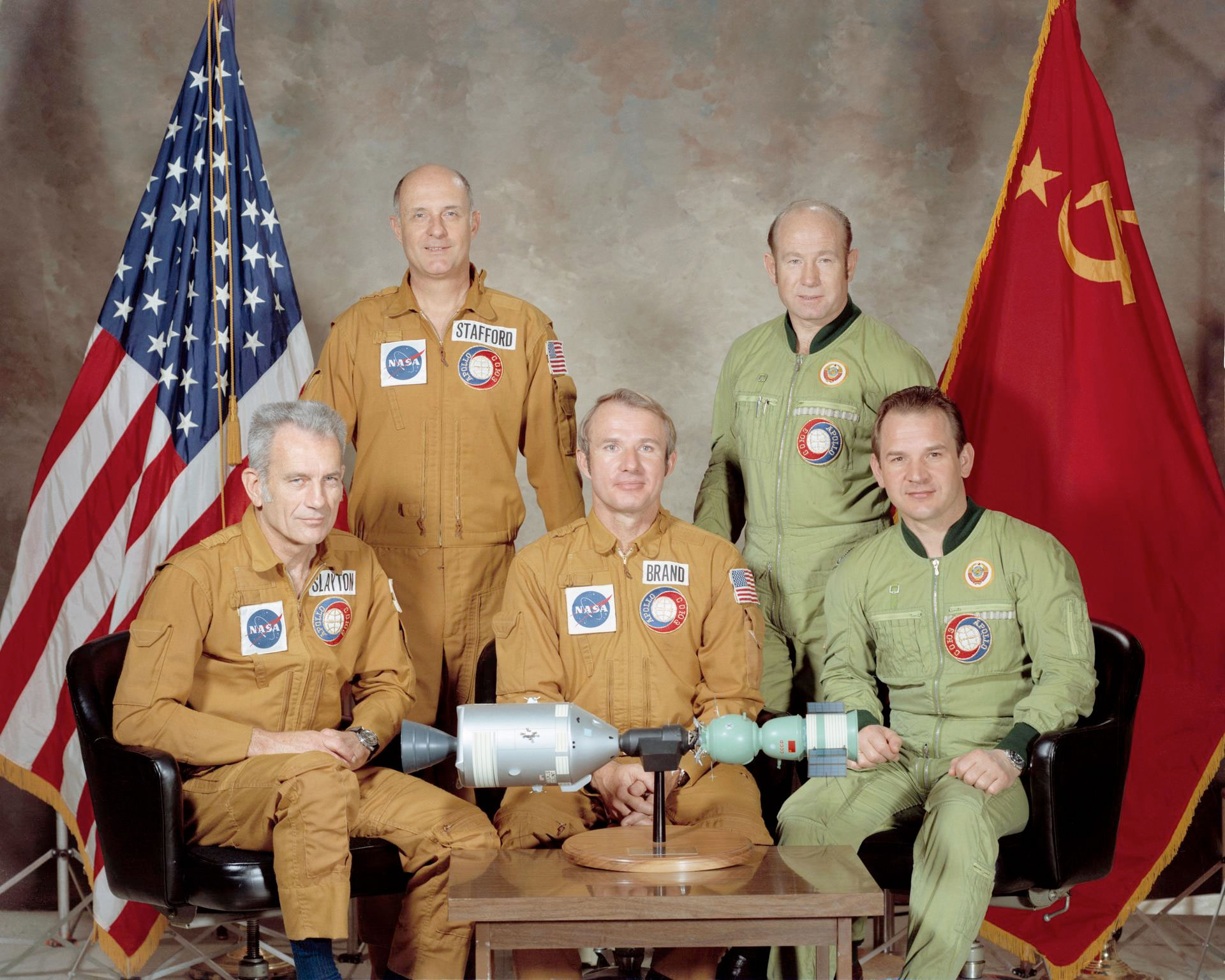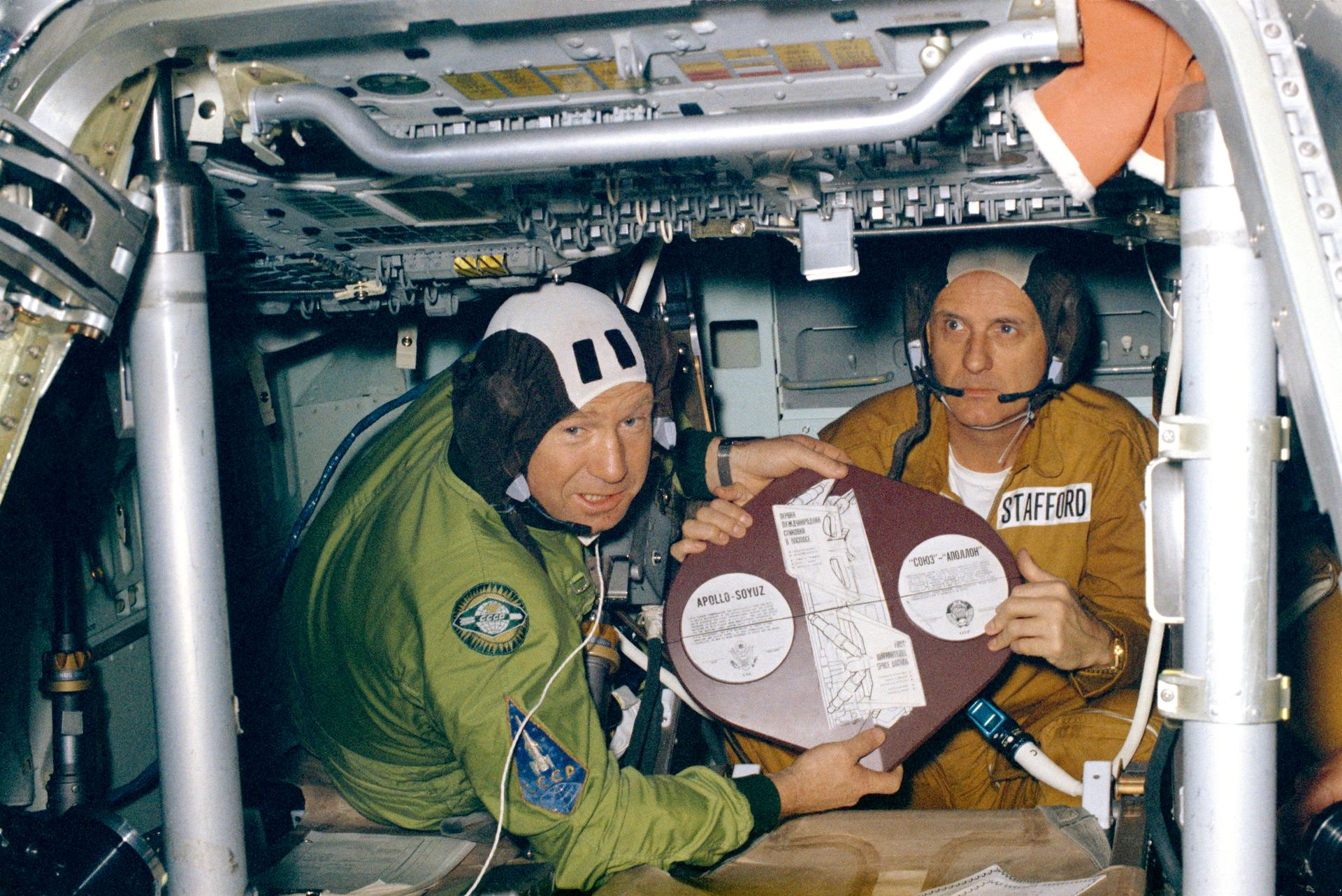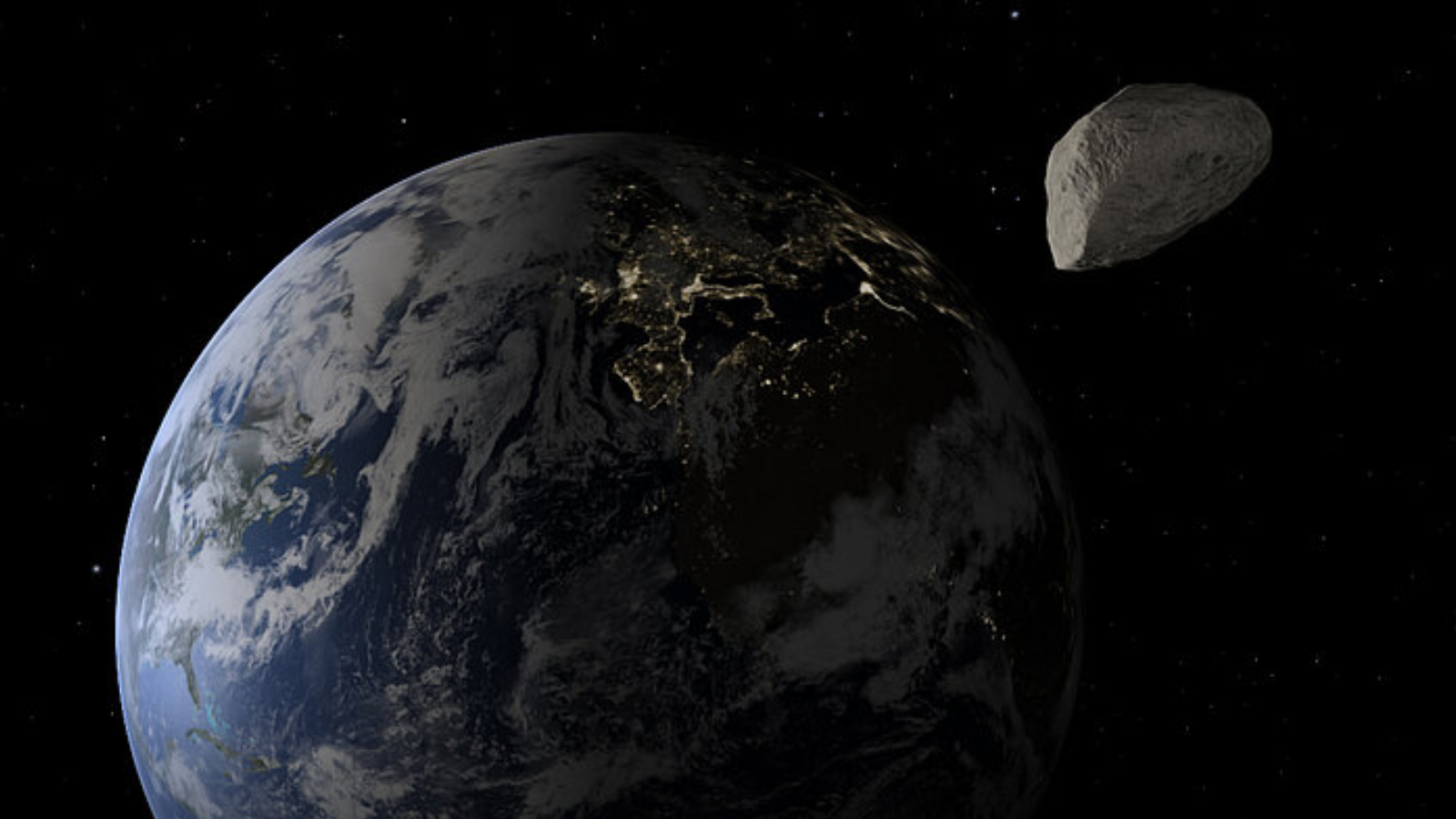50 years after a historic handshake in space, the Apollo-Soyuz Test Project's legacy still resonates
The first joint space mission between the United States and Russia (then the Soviet Union) docked in Earth orbit half a century ago today (July 17).
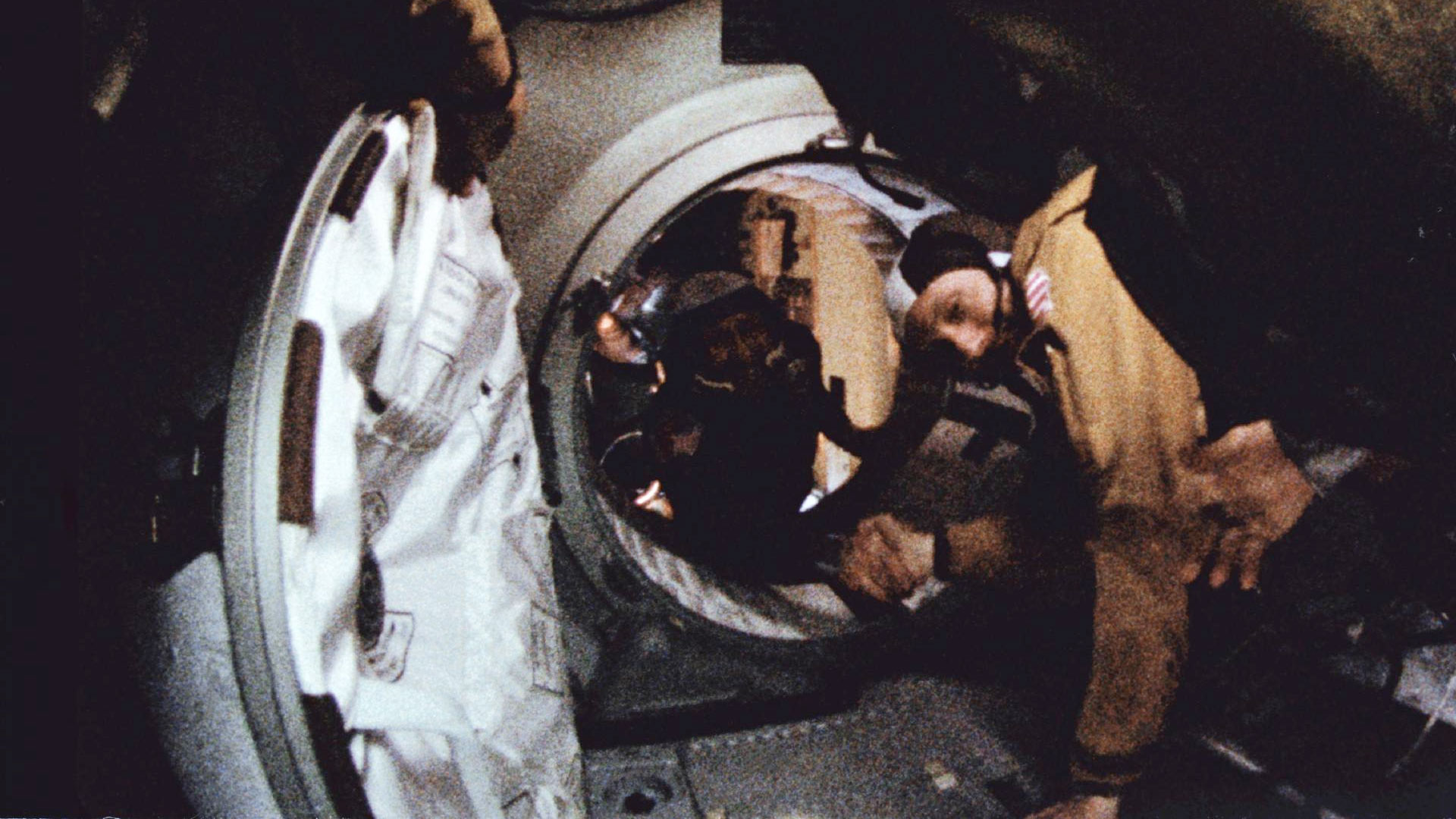
"Soyuz and Apollo are shaking hands now!"
Fifty years ago today (July 17), at 12:09 p.m. EDT (1609 GMT), history was made as two crewed spacecraft launched by two countries docked together in orbit for the first time. Three American astronauts and two Russian (then Soviet) cosmonauts met up for just under two days of joint operations, setting the stage for future cooperation in space.
"Very good to see you!" exclaimed Alexei Leonov, commander of the Soyuz side of the Apollo-Soyuz Test Project (ASTP, or Experimental-Flight Soyuz-Apollo in the Soviet Union), after the hatch between his spacecraft and the docking adapter was opened.
"Very happy, my friend!" replied U.S. commander Thomas Stafford in "Oklahomski," his unique version of Russian with a heavy Oklahoma drawl.
And then the Cold War rivals and space race competitors shook hands.
Soon after, the rest of the crew — cosmonaut Valery Kubasov and astronauts Vance Brand and Donald "Deke" Slayton — joined in on the greetings. It was those two Americans' first time in space and Kubasov's second. Leonov had previously performed the world's first spacewalk, and Stafford was on his fourth flight; his previous off-Earth experiences included a trip around the moon.
Glasnost and gifts
"Your flight is a momentous event and a very great achievement, not only for the five of you but also for the thousands of American and Soviet scientists and technicians who have worked together for three years to ensure the success of this very historic and very successful experiment in international cooperation," said then-U.S. President Gerald Ford during a call to space from the White House at the time.
Breaking space news, the latest updates on rocket launches, skywatching events and more!
"It has taken us many years to open this door to useful cooperation in space between our two countries, and I am confident that the day is not far off when space missions made possible by this first joint effort will be more or less commonplace," Ford said.
To mark the occasion, the crew members exchanged gifts. Plaques and medallions that had been designed to separate into halves — so one half could launch on Apollo and the other on Soyuz — were reassembled in space. The crew also signed formal documents, known as the "Space Magna Carta," that certified that this was this was first international space docking.
The commanders exchanged small flags of each others' countries and tree seeds to be planted later in their respective nations. The Soyuz crew also launched with a United Nations flag, which the American crew then brought back to Earth and which is on display today in the U.N.'s New York headquarters.
The five crew members took turns touring each other's spacecraft and came together for joint meals. Leonov surprised his U.S. counterparts with squeeze tubes labeled as containing vodka — in reality, they were filled with borscht (cold beet soup).
"The best part of a good dinner is not what you eat, but with whom you eat," said Leonov, replying to a reporter's question during a televised, in-flight press conference.
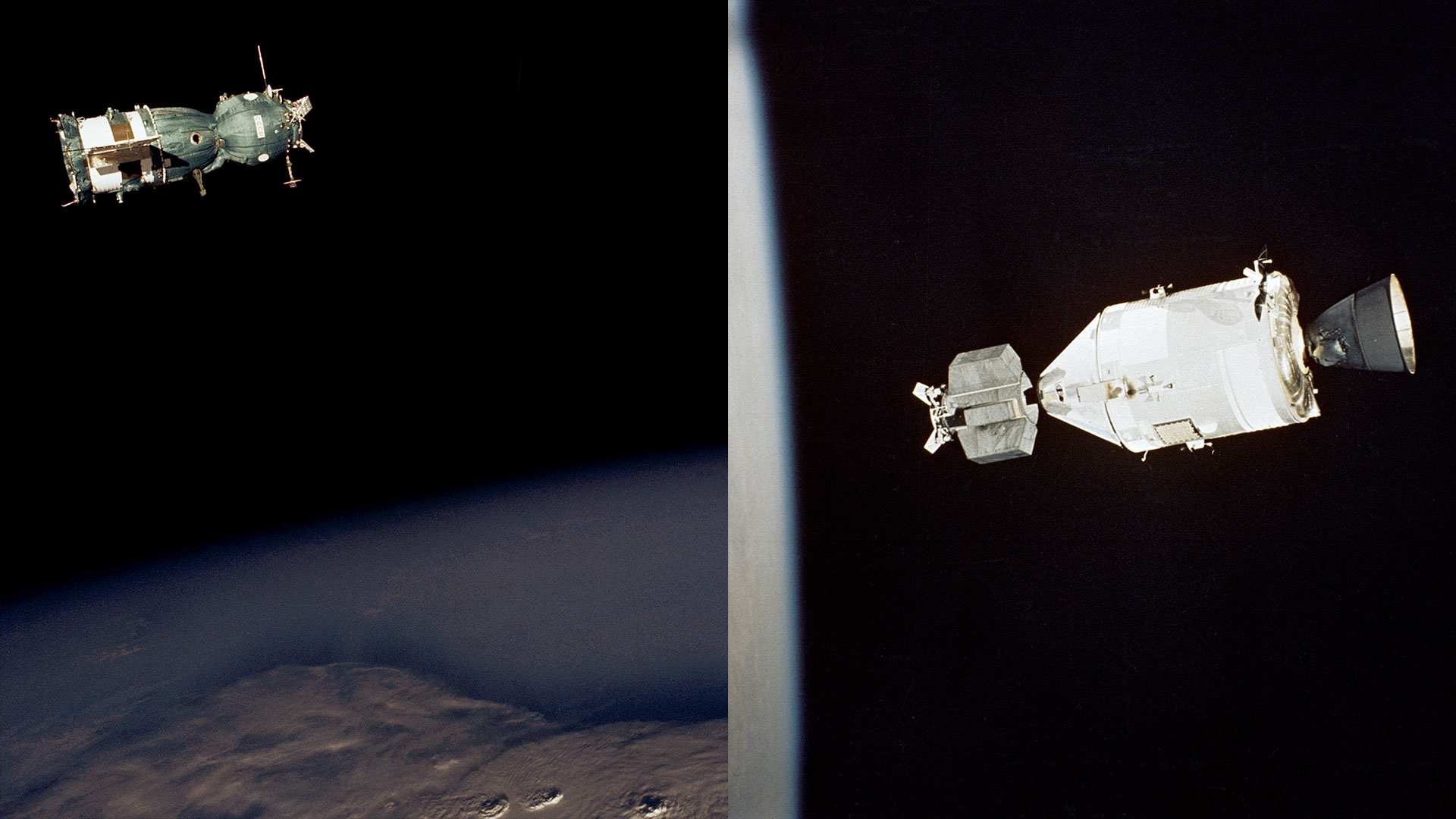
The U.S. and USSR crews returned to their respective spacecraft to sleep, but otherwise worked as one crew as long as their vehicles were linked. After 44 hours, 2 minutes and 51 seconds, the Apollo command module undocked from the Soyuz, and, as planned, created an artificial solar eclipse for the cosmonauts to photograph.
The U.S. crew then approached and docked with the Soyuz again for 2 hours, 52 minutes and 33 seconds before the two crews bid farewell to each and parted ways.
Leonov and Kubasov returned to Earth on July 21, landing on the steppe of Kazakhstan, while Stafford, Brand and Slayton stayed in orbit for another three days, splashing down in the Pacific Ocean on July 24, 1975.
"It made a big impression, not just on me, but on the rest of the world."
NASA astronaut Mike Fincke
50-year-old foundation
Despite preliminary talks about follow-up missions sending an Apollo capsule or space shuttle to a Soviet Salyut space station, the next time Russians and Americans would meet up in orbit coincided with the 100th U.S. human spaceflight, 20 years (almost to the day) after the ASTP crews exchanged handshakes.
On June 29, 1995, NASA's space shuttle Atlantis docked with Roscosmos' Mir space station. This time it was Vladimir Dezhurov, the commander of Mir's 18th crew, who clasped hands with STS-71 commander Robert "Hoot" Gibson.
The milestone was preceded by Russian cosmonauts flying with U.S. space shuttle crews and NASA astronauts joining Russian Soyuz crews, as well as a shuttle mission rendezvousing (but not docking) with Mir. After STS-71, eight more U.S. missions linked up with the Russian space station to rotate crews and deliver components for the complex.
The Shuttle-Mir program was considered Phase 1 of the International Space Station (ISS) program.
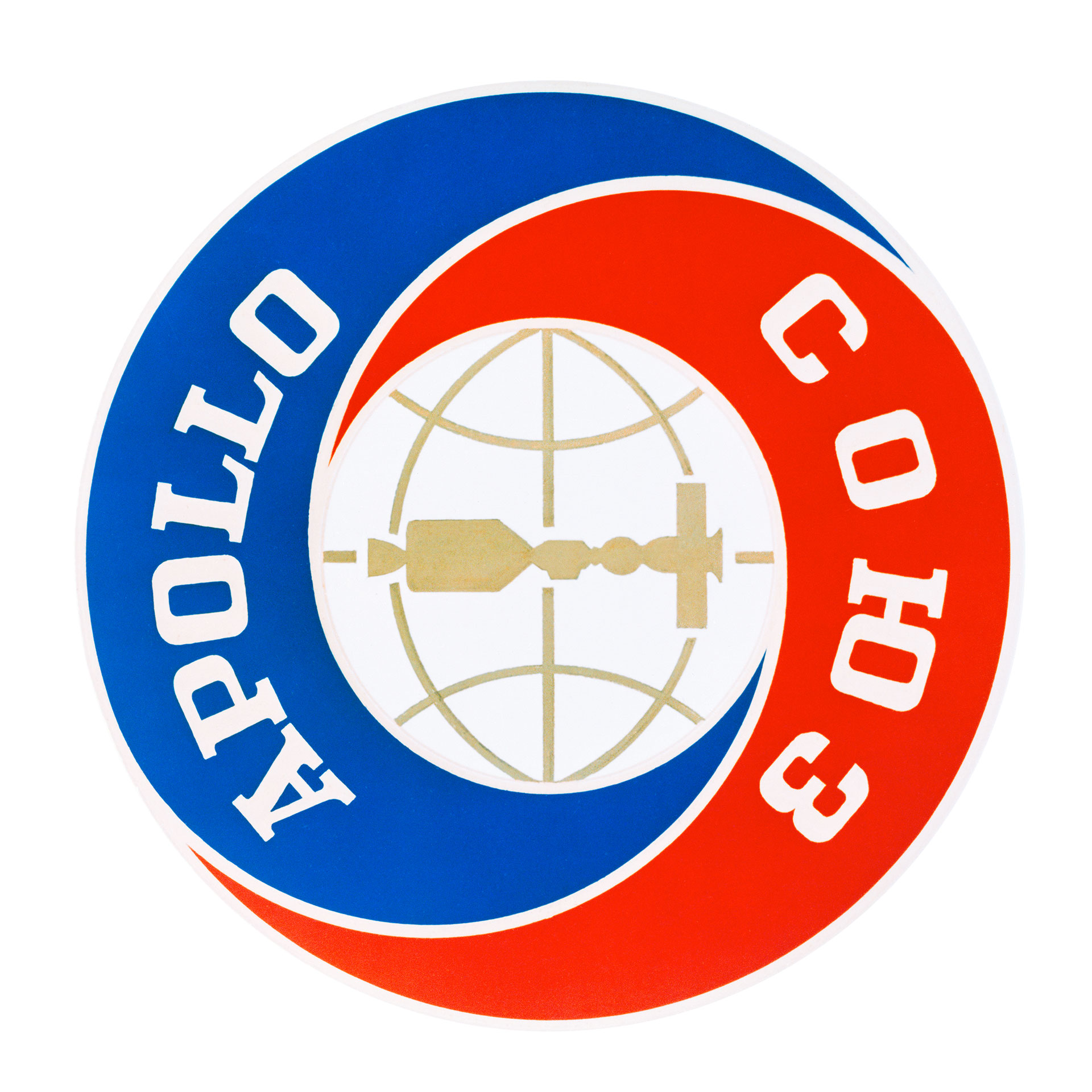
On Nov. 2, 2000, just about midway between the ASTP mission and today, astronaut William "Bill" Shepard and cosmonauts Yuri Gidzenko and Sergei Krikalev became the first crew to take up residency on board the ISS. Since then, for nearly 25 years, there has not been a day when U.S. astronauts and Russian cosmonauts have not been in space together.
"It made a really huge impression on me to see some people from the Soviet Union, which at the time we were not very good friends with in the middle of the Cold War, and then these brave American astronauts get along really well and cordially and with friendship," Mike Fincke, who as a NASA astronaut is set to return to the International Space Station for his fourth time on SpaceX's Crew-11 launch at the end of this month, said during a July 10 press conference in Houston. Fincke was 8 years old when the Apollo-Soyuz Test Project occurred.
"It made a big impression, not just on me, but on the rest of the world — that if the Soviet Union and United States can work together in space, maybe we can work together here on Earth," he said.
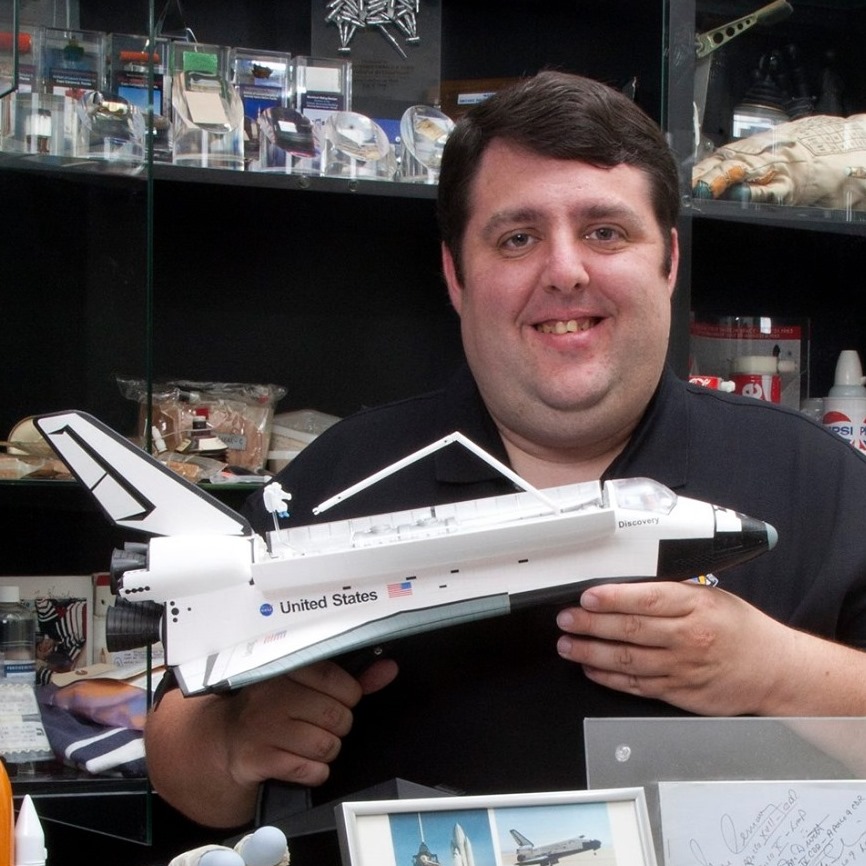
Robert Pearlman is a space historian, journalist and the founder and editor of collectSPACE.com, a daily news publication and community devoted to space history with a particular focus on how and where space exploration intersects with pop culture. Pearlman is also a contributing writer for Space.com and co-author of "Space Stations: The Art, Science, and Reality of Working in Space” published by Smithsonian Books in 2018.
In 2009, he was inducted into the U.S. Space Camp Hall of Fame in Huntsville, Alabama. In 2021, he was honored by the American Astronautical Society with the Ordway Award for Sustained Excellence in Spaceflight History. In 2023, the National Space Club Florida Committee recognized Pearlman with the Kolcum News and Communications Award for excellence in telling the space story along the Space Coast and throughout the world.
You must confirm your public display name before commenting
Please logout and then login again, you will then be prompted to enter your display name.
